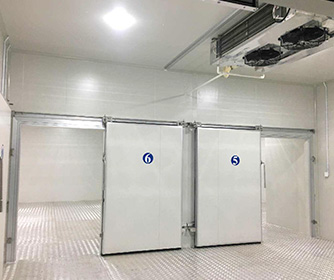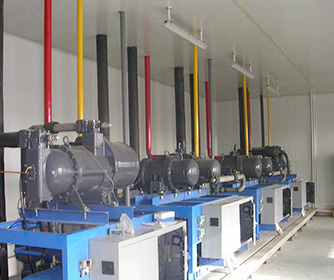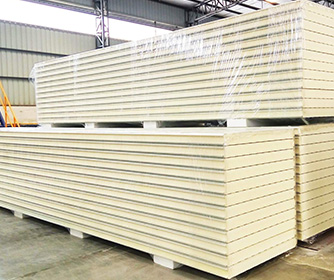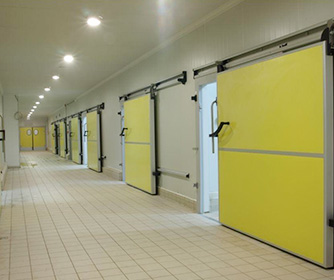1. Introduction to 10 Ton Water Cooled Chiller
Water-cooled chillers are essential equipment in various industrial sectors, providing efficient and reliable cooling solutions for large-scale applications. A 10-ton water-cooled chiller refers to a cooling system capable of removing 10 tons of heat per hour from a process or space. This technology is vital in industries requiring precise temperature control, such as food processing, pharmaceuticals, plastics, and HVAC systems.
In this article, we will explore the critical features of a 10-ton water-cooled chiller, including its components, applications, advantages, and installation requirements. We will also address the factors to consider when selecting a chiller and discuss maintenance tips to ensure optimal performance and longevity.
2. Understanding the Basics of a 10 Ton Water Cooled Chiller
2.1 Definition and Capacity of a 10-Ton Chiller
A chiller's "tonnage" refers to its cooling capacity, with one ton equal to the ability to remove 12,000 BTUs (British Thermal Units) of heat per hour. Therefore, a 10-ton water-cooled chiller can remove 120,000 BTUs of heat per hour. This capacity makes it suitable for medium to large-scale cooling needs in various industrial settings.
2.2 How Water-Cooled Chillers Work
Water-cooled chillers function by utilizing water to absorb heat from a process or environment. The chiller's refrigerant system circulates through a compressor, evaporator, condenser, and expansion valve. The evaporator cools the water, which is then circulated through the system to absorb heat. The heated water is sent to the cooling tower, where the heat is dissipated into the atmosphere, and the cycle repeats.
2.3 Comparison Between Air-Cooled and Water-Cooled Chillers
Water-cooled chillers differ from air-cooled chillers primarily in how they dissipate heat. While air-cooled chillers use air to remove heat, water-cooled systems rely on water and cooling towers. Water-cooled chillers are generally more energy-efficient and capable of handling larger cooling loads, but they require more infrastructure, such as cooling towers and water piping systems.
3. Components of a 10 Ton Water Cooled Chiller
3.1 Compressor
The compressor is the heart of the chiller, responsible for compressing the refrigerant and enabling heat transfer. In 10 ton water cooled chillers, common compressor types include scroll, screw, centrifugal, and reciprocating compressors.
3.2 Condenser
The condenser in a water cooled chiller transfers the absorbed heat from the refrigerant to the cooling water. This water is then circulated to a cooling tower, where the heat is released into the atmosphere.
3.3 Evaporator
The evaporator is where the refrigerant absorbs heat from the water, cooling it before it is circulated through the system. The water leaving the evaporator is typically at a lower temperature, ready to cool industrial processes or spaces.
3.4 Expansion Valve
The expansion valve controls the flow of refrigerant into the evaporator, ensuring that the right amount of refrigerant enters the system to cool the water effectively.
3.5 Refrigerant
Refrigerants are the substances that absorb and release heat during the cooling process. Modern chillers often use eco-friendly refrigerants to minimize environmental impact.
4. Types of Compressors in Water Cooled Chillers
4.1 Scroll Compressors
Scroll compressors are known for their efficiency and reliability in small to medium-sized chillers, such as 10 ton units.
4.2 Screw Compressors
Screw compressors are highly efficient and are commonly used in medium to large chillers, offering excellent energy performance.
4.3 Centrifugal Compressors
Centrifugal compressors are suited for larger chillers but can be adapted for certain 10 ton models to optimize energy use.
4.4 Reciprocating Compressors
Reciprocating compressors are versatile and can be found in various chiller sizes, though they are less common in water cooled systems compared to the other types.
5. Applications of 10 Ton Water Cooled Chillers
5.1 Industrial Manufacturing
In manufacturing, chillers are used to cool equipment and processes, improving efficiency and preventing overheating.
5.2 HVAC Systems
Water cooled chillers are commonly used in HVAC systems for cooling large buildings or complexes, providing consistent climate control.
5.3 Food and Beverage Processing
Temperature control is crucial in food and beverage production to maintain product quality and safety, making chillers essential.
5.4 Plastic and Rubber Industry
Chillers help in cooling molds and extruded materials in plastic and rubber manufacturing, improving product integrity and production speed.
5.5 Pharmaceutical and Chemical Industries
Precise temperature control is vital in pharmaceutical production to ensure the quality and stability of products.
6. Advantages of Using a 10 Ton Water Cooled Chiller
6.1 Energy Efficiency
Water cooled chillers are more energy-efficient than air cooled systems, making them cost-effective for long-term use.
6.2 Space Efficiency
These chillers take up less space since the cooling tower can be located away from the main unit, making them ideal for confined industrial spaces.
6.3 Consistent Cooling Performance
Water cooled chillers provide reliable and steady cooling, even in high-demand situations.
6.4 Long Lifespan and Durability
With proper maintenance, water-cooled chillers have a longer operational lifespan than air-cooled systems.
FAQs
1. What is a 10-ton water-cooled chiller?
A 10-ton water-cooled chiller is a cooling system that removes 120,000 BTUs of heat per hour from a process or space using water as the cooling medium.
2. What industries use 10-ton water-cooled chillers?
Common industries include food processing, HVAC, plastic and rubber manufacturing, pharmaceuticals, and chemical production.
3. How does a water-cooled chiller differ from an air-cooled chiller?
Water-cooled chillers use water and a cooling tower for heat dissipation, while air-cooled chillers use air. Water-cooled systems are more energy-efficient but require more infrastructure.
4. What are the key components of a 10-ton water-cooled chiller?
The main components include the compressor, condenser, evaporator, expansion valve, and refrigerant.
5. What are the installation requirements for a 10 ton water cooled chiller?
Installations require space for the unit and cooling tower, electrical and water connections, and compliance with safety standards.
6. How can I ensure the energy efficiency of my water cooled chiller?
Regular maintenance, the use of eco-friendly refrigerants, and proper water management can improve energy efficiency.




